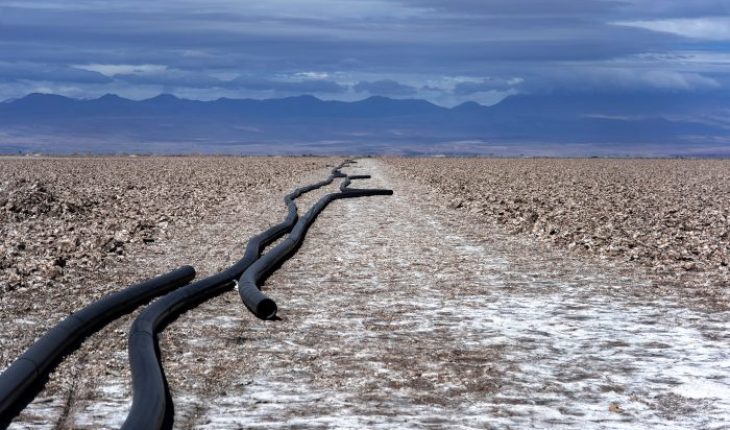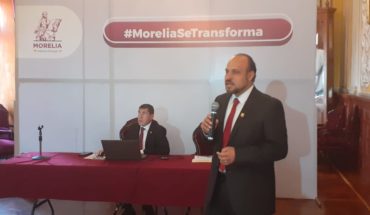The oasis that once interrupted the dusty hillside S of the Atacama desert in northern Chile allowed humans and animals to survive for thousands of years in the world’s driest climate. That before mining started.
Sara Plaza, aged 67, still remembers when she led her family’s sheep through an ancient Inca trail between wells and pastures. Today it looks at an engine that pumps fresh water from under the Tilopozo wetland, mostly dry. “Now the miners take the water,” he lamented, showing the dead grass around stone ruins that once offered a night shelter for the carriers.
“No one comes here anymore because there is not enough grass for animals,” lamented Plaza. “But when I was a child, there was so much water that all this area could be confused with the sea.”
Atacama has become one of the most crowded mining epicenters on the planet, after discoveries of huge copper and lithium deposits. In recent years, mining operations have intensified thanks to the increasing demand for lithium, which is indispensable in the production of batteries for electric vehicles. Chile exported nearly US $1 billion in lithium last year, nearly four times the export value of four years ago.
The search for soft ore is usually seen as a good thing for the environment. Electric car manufacturers like Tesla want to make it easier and cheaper for drivers to adopt clean battery replacement instead of dirty combustion engines. The batteries are by far the most expensive part of an electric vehicle, so extracting more lithium to meet the growing demand helps lower prices. Putting more electric cars on the streets is one of the most effective ways to mitigate the effects of climate change, reducing the 15.6% of global carbon emissions in the transport sector.
However, extracting the Atacama lithium means pumping large amounts of water and extracting salt mud known as brine, and that has an irreversible impact on the local environment. Here, in this remote area of the Andes, the hopeful mission of saving the planet through electric cars is to destroy a fragile ecosystem and exhaust the reserves of drinking water.
“We deceive ourselves if we call it sustainable and green mining,” said Cristina Dorador, a Chilean biologist who studies microbial life in the Atacama desert. “Lithium fever should decrease because it is directly damaging to salt, ecosystem and local communities.”
The crown jewel of lithium mining is a huge salar 10 times larger than Central Park in new York. Extracting the minerals requires working at a height close to 2,000 meters above sea level. The desert landscape is full of shallow lagoons in which the flamingos nest in the midst of volcanoes and mountains. The impressive geography is similar to a gigantic bowl.
Gilder studies the microscopic life found in the lagoons, fed by underground aquifers and streams that descend from the mountains. For thousands of years, that water has deposited the coveted minerals in the heart of the Salar. It has also been the key to keeping life in such a hostile place that scientists use it to simulate conditions on Mars.
The world’s largest copper mine, hidden from BHP, draws water from wells located in the southern part of the Salar, as well as the Zaldívar depot in Antofagasta. The copper use water at every step of the process to convert the rocks into mineral plates with a purity of 99.9%. Copper-rich rocks are crushed to create a powder that mixes with water to flow through giant pipes and then uses water mixed with chemicals to separate the copper from the mixture.
Lithium mining needs less fresh water, but it requires pumping large amounts of brine, the salty sludge under the crust of the salares. The mineral-rich brine is left in large pools to evaporate before processing. The two largest lithium mining companies in the world, Albemarle and Chile’s chemical and mining society, are currently extracting brine from the salar to unprecedented levels. The Albemarle process is “absolutely clean”, said a company worker in an email, and the company develops technology to produce more lithium without pumping more brine than authorized. (SQM did not respond immediately to a request for comments).
Environmental impact studies carried out by mining companies as part of the government licensing process do not show a significant impact on water or wildlife levels. The General Directorate of Water, which has no data of its own and monitors the Salar through company reports, sees no risk of irreversible damage as long as the legal requirements are met, said its director, Óscar Cristi.
Lack of government data or comprehensive independent research has made it difficult to question mining claims in the past, but recent studies and testimony from local residents point to rapid deterioration.
Between 2000 and 2015, the amount of water extracted from the Salar was 21% higher than that which was leaked, according to several reports of the Chilean Government’s non-metallic mining committee that analyzed data provided by companies in the sector. Water levels in some wells in the southern part of the Salar decreased in total about a metre in the last decade. In the middle of the Salar, the levels fell between 20 centimeters and 1 meter per year, on average, during the 15-year period covered by the data.
Falling water levels is a huge problem for the people in the area. Peine, the town closest to mining, is licensed to extract 1.5 liters of water per second for 400 inhabitants and a transient population of mining workers that can reach 600. BHP’s stash is allowed to pump 1,400 liters per second. Albemarle and SQM, the large lithium mining companies, can take out about 2,000 liters per second of brine.
The water allocated to the dwellings in Peine is usually not sufficient, forcing the local government to cut off the supply of drinking water at night so that the tanks can be filled. During the heyday of the summer, the water cuts can last up to four days.
The reports of the non-metallic mining committee linked the fall in water levels to the increase in brine extraction by lithium mining companies. The entity also began to develop a model for the government to independently monitor environmental changes. However, when the Chilean president, Sebastián Piñera, took office in March his government dissolved the agency.
The rare rainfall in Atacama and the world’s highest solar radiation generate rapid evaporation and allow mining companies to produce high quality lithium at low cost. This method, which dates back to the 1950, results in the loss of large amounts of water. Companies and scientists are investigating ways to eliminate evaporation pools by capturing lithium through chemical processes and then re-injecting water into the salar, but these technologies have not reached commercial implementation.
Las Vegas and the lagoons in the southern part of the Salar have been reduced in recent years and the population of flamingos has declined, according to the Council of Atacameños Peoples, the group that represents the 18 indigenous communities that live around the Salar. “Each company has its own standards-compliant studies,” says Francisco Mondaca, environmental affairs coordinator for the Agency. “The problem is that the rules are weak. Water, flora and fauna are measured separately, so we don’t know how a change in one affects the other. ”
Local communities want to change that and last month the Council installed its first monitoring station in a Salar lagoon. The unit will continually track water levels, unlike monthly mining measurements. There are plans to build 14 additional stations over the next year.
“The Chilean government encourages more and more companies to come here to explore and extract lithium, but they do not have the ability to oversee all that,” said Sergio Denso, president of the Indigenous Council. “People must realize that there is an environmental cost associated with lithium and that cost is felt here.”
BHP pledged to stop using fresh water in Chile in 2030 and has so far invested $4 billion in desalination plants, but the company now requests an extension of its water rights from 2020 to 2030, promising to reduce the rate of Extraction at 640 liters per second. The monitoring has not shown different environmental changes to the anticipated ones according to the existing permissions, commented a representative of the company in an email. The Zaldívar copper mine in Antofagasta also looks for a new license to pump 213 liters per second up to 2029. The miner was not immediately available to comment.
The enormous increase in the demand for lithium attracts other miners to Atacama and other salt mines in the Andes. About 40% of Chilean salt farms are exploited to extract lithium, according to Gilder. If the current method of extraction continues, warns, there is a risk that the salt-water will run out.
This has happened before: Gilder mentioned the Salar de Desgunillas, significantly affected by more than a decade of extraction by the Cerro Colorado mine of BHP. They are also drier because of the mining activity, Punta Negra, near Escondida, and Michincha, near the Collahuasi propied copper mine.AD by Anglo American and Glencore.
The Salar de Atacama is the largest in Chile, which means that the changes will occur more slowly, but it can happen the same as other salt, said Mondaca, the Indigenous council. It warns that the environmental impact assessments of mining companies do not take into account the increase in temperatures, which could accelerate the drying process.
“Climate change only makes the problem worse,” said Mondaca. “The miners say the impact of what they’re doing now won’t feel for another 20 years, but with climate change it could be 10 years or 5. No one knows. ”
This could be the ultimate irony of the green revolution that boosts the demand for electric vehicles and lithium-made batteries. Scientists consider the Atacama’s fragile environment a key to understanding the origins of life and the effects of climate change. Millions of years ago the Salar was a lake that has dried up slowly, a process similar to that which could occur in other parts of the planet as temperatures rise.
“It’s a picture of how our lakes will look in the future,” said Gilder. For her, extracting water from this agonizing ecosystem means taking away the last gasp before scientists have had the opportunity to fully understand it.





